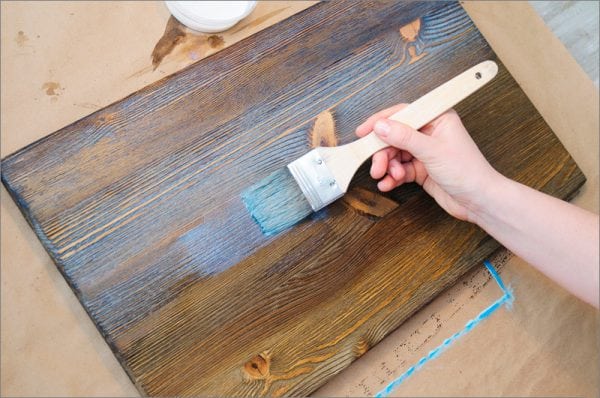Varnishes for acrylic paints - are a composition based on a plastic dispersion, characterized by increased water solubility. Such properties are achieved through the use of specific characteristics included in the composition of the finished resin product.
- Material Composition
- Physical and chemical properties of acrylic
- Advantages of Acrylic
- Types of varnishes
- Applications for acrylic
- Varnishing Instructions
- Stage one: varnish selection
- Stage Two: Preparatory
- Stage Three: Varnishing
- Useful Tips
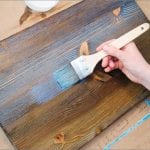

The structure of acrylic is such that after drying the varnish a durable protective film appears, which protects the surface from the effects of both the external environment and mechanical damage. The unique features of acrylic have attracted numerous consumers. Such varnish is especially common in Western countries, where industrial giants took up its production, and the use of this material has become widespread.
to contents ↑Material Composition
The final composition includes several components:
- liquid polymer material - acrylic dispersion;
- antiseptic to protect wood;
- a plasticizer responsible for the appearance of a transparent top layer, and characterized by resistance to mechanical damage.
Physical and chemical properties of acrylic
Acrylic composition is a ready-to-use liquid with a uniform consistency and colorless. The material is based on high-quality aqueous dispersions of acrylic resins. In order to refine, dispersions are mixed with various elements. Acrylic is soluble in water, as well as in a solution of diethyl, ethanol and ethers.
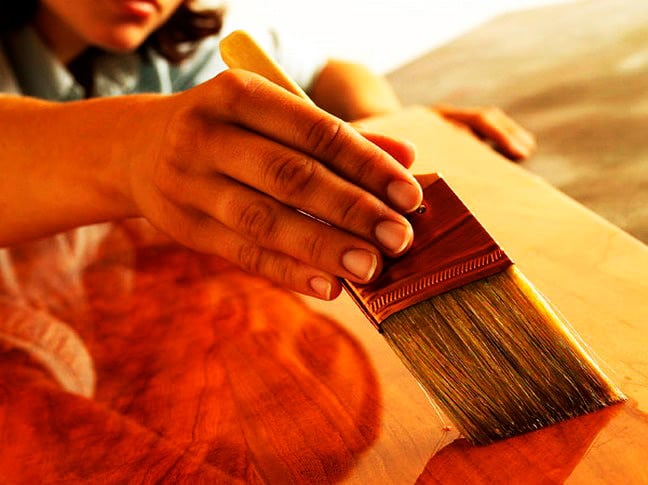
The material is characterized by such properties:
- viscous fluidity and good solubility in water;
- slight smell;
- dries due to evaporation of the liquid, after which a transparent shiny film is formed that protects the surface from external influences;
- the resulting film is elastic, which helps it to resist mechanical stress;
- the film remains colorless even under the influence of ultraviolet light;
- loses water solubility after drying;
- acrylic adheres to surfaces qualitatively, provided they are clean;
- the material dries quickly;
- mixing with water-soluble paints is possible;
Advantages of Acrylic
The main advantages of the composition based on acrylic are as follows:
- temperature stability;
- good heat conductivity and moisture resistance;
- high resistance to mechanical influences;
- insensitivity to ultraviolet light;
- low weight;
- combination of elasticity and strength;
- environmental friendliness and harmlessness for residents;
- resistance to the formation of mold and the development of microorganisms.
- aesthetic appearance;
- permissible processing of not only wood, but also plaster, putty, brick.
- Fire safety.

Types of varnishes
This product is differentiated by a number of signs. First of all, we are talking about the composition, which may be:
- one-component, where the main substance is acrylic;
- two-component, in which there are polyurethane, alkyd or epoxy additives.
Classification is also made according to the type of the final surface:
- matte;
- semi-matte;
- glossy.
By composition, varnishes are classified into:
- Acrylic, water based. They are completely transparent and fireproof. Such compositions qualitatively protect wood or other surface from external influences. Among the features of varnish is the need for a stable indoor climate.
- Oil - are made on the basis of organics (natural or synthetic resins and oils). Most suitable for wood, as this material is able to properly absorb oily compounds. They differ in quick and significant hardening. However, drying lasts quite a long time and can last for several days.
- Alkyd - are made on the basis of synthetic solvents and alkyd resins. Compared to oil, they have better moisture resistance and dry out faster. Alkyd varnishes are considered universal, since they can even process surfaces that are outside the room. In addition, when applying, you can use any available option - a small brush, roller or spray.
- Nitro-lacquers. Interesting in very quick solidification and their “tenacity” relative to the surface. The minus of nitro-varnishes is also significant - they are toxic and can also destroy paint. Therefore, it is possible to apply such a varnish only in a respirator, and work should begin with a compatibility test with paint.
- Polyurethane Distinctive features - universal applicability, significant resistance to all kinds of influences - the external environment, chemical, mechanical. Great for different materials and paints. The disadvantage is the technological complexity of the application, as well as the high cost.
- Epoxy They are considered less aesthetic in comparison with polyurethane, however, they are comparable in strength characteristics and dry out faster. Most often used for varnishing wood surfaces in wet rooms (for example, in baths or pools).
Note! The question of the admissibility of varnish acrylic paint is in the field of composition of the paint material. The ideal option in this case is acrylic varnish, but you can also use polyurethane or certain types of alkyd varnishes.
Read more about featuresapplying alkyd varnish to acrylic.
to contents ↑Applications for acrylic
Due to its unique qualities, acrylic varnish is widely used in repair and construction works, and often instead of ordinary paint.
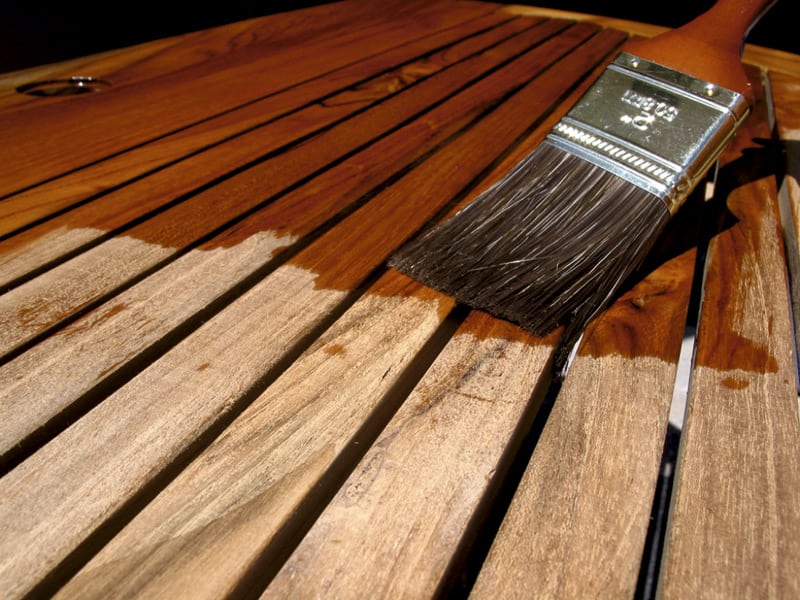
The main areas of application:
- Decorative wood finish. Acrylic also protects the tree from pests and mechanical damage, and also increases its moisture resistance.
- Acrylic compounds are widely used in construction. Varnish is popular for its quick drying and color stability.
- Elements of household goods and interior. Using acrylic, various interior elements are processed, such as: furniture, stairs, railings, etc.
- There are special varieties for decorating yachts. They are especially resistant to moisture and temperature extremes.
- Raw materials for the manufacture of building mixtures and adhesives.
Varnishing Instructions
The work consists of several successive stages.
Stage one: varnish selection
First of all, you need to find out whether the varnish is suitable for the existing base (wood, putty, plaster). It is recommended to deal with a fresh composition of varnish with acrylic elements. Fresh means that 3 months have passed since its release. It is advisable to give preference to a matte composition over a glossy one, since acrylic usually does not need to give it a shine.
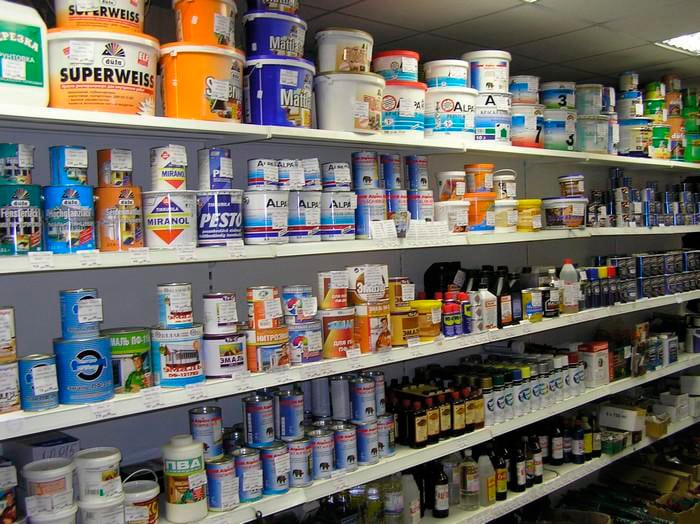
Stage Two: Preparatory
We remove the protective component (film, glass or the like), and so as not to violate the acrylic base. If dust is detected, it must be carefully removed. It is better to do this with a vacuum cleaner or even with a feathery broom.
Note! Using rags made from coarse fabrics is strongly discouraged, as acrylic is very sensitive.
Even before use, the varnish must be heated to 40-50 degrees. This is most correctly done by the method of a water bath. If it is not possible to measure temperatures, then the rule applies: 3 liters of the paintwork are heated to the desired temperature in about 5 minutes. When heated, the composition must be stirred, for example, with a rail.
to contents ↑Stage Three: Varnishing
First of all, you need high-quality lighting. Light should go from above and to the right. It is recommended to apply the composition with a flute brush 50-150 millimeters wide. The brush is slightly dipped in varnish, then the surface is treated with sweeping, but smooth strokes. After processing approximately 0.5-0.7 square meters, the applied layer must be polished.
The polishing is done with a dry brush and as soon as it starts to stick to the surface, varnishing of other areas can begin.
Note! The treated surface must be protected from dust until the varnish hardens.
to contents ↑
Useful Tips
- To optimize varnish consumption, a primer is recommended. To do this, you can use a water primer or tinted impregnation.
- If the goal is a "mirror" surface, before the primer, you need to carry out "wet" grinding, which means grinding wet wood.
- Also, mirroring is given by processing all the word of the varnish layers (except the last) with a fine sandpaper.
- When choosing a paintwork product, the presence of defects on the surface must be taken into account. For example, glossy visually increases existing irregularities, and the matte background conceals.
- Dilute Acrylic You can only clean water. Moreover, the volume of water should not exceed a tenth. Do not dilute water-based varnish with organic solvents or mix with varnish or other varnishes. Violation of these rules leads to the loss of wood its natural structure.
- Varying shades in a tinted can are normal. However, the composition must be well mixed before use.
- Acrylic varnish can not be used if the humidity is less than 50%, because in this case it dries too quickly, which will cause defects.
- Do not varnish greasy surfaces. They need to be pre-treated with a soapy solution, and then dried.
- To give the wood a noble hue, it must be treated with tinting impregnation, and after that - colorless varnish or varnish mixed (5%) with water impregnation.
- When applying tinted varnish, it is necessary to monitor the uniformity of the layer, because if it is too thick, this will make the surface look dark.
- The uniformity of the coating is more likely to be facilitated by several thin layers, rather than one thick one.
- To add darkness, you can first make the first layer very thin, and the next should be colorless.
- If the goal is uniformity of varnishing - the old varnish layer needs to be completely cleaned or dark varnish should be used.
- To level the absorbent qualities of a tree, it is primed with a pair of layers of colorless impregnation or then tinted.
Before starting paintwork, it is recommended to try your skills on some kind of test product. It is better to move on to responsible tasks as you gain certain experience.



